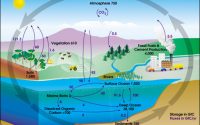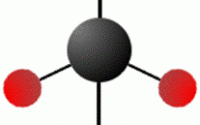Handling Strong Bases in Biodiesel Production
Sodium and Potassium Hydroxides/Methoxides
Used to catalyze the transesterification reaction, sodium and potassium hydroxide are extremely corrosive.
The hydroxides are dry flakes or pellets and must be dissolved in methanol, which produces “methoxides” concentrated in methanol. The dust from the hydroxides is an airway irritant and will burn unprotected skin and eyes, especially when handled manually. Dissolving the hydroxides in alcohol is an exothermic reaction and can generate a considerable amount of heat. Stirring the liquid in an open container can produce a fine mist of liquid droplets. If this mist is accidentally inhaled, breathlessness and severe irritation of the respiratory tract can occur. Accidental swallowing can lead to major damage to the throat lining and digestive system. This methoxide liquid solution will kill nerve cells before pain can be felt.
When handling and mixing these materials, wear protective equipment, including
- full-face shield
- a respirator
- impervious protective clothing.
In a commercial plant, the materials are mixed in a closed, nitrogen-blanketed tank. When mixing in the ambient atmosphere, always mix catalyst and methanol very slowly to prevent a sudden temperature rise and splashing. Mixing in a well-ventilated area is particularly important when using open-top vessels.
Store solid hydroxides in a cool, dry, well-ventilated area, and avoid any possible water contact. Store the methoxide mixture in a tightly closed container in a cool, dry, well-ventilated area away from sources of heat and moisture. Combustion of this product generates toxic fumes. In case of fire, do not use water or foam. Use dry chemical, soda ash, lime, or sand, or withdraw from the area and let the fire burn.
Be aware that empty containers of hydroxides and/or methoxides may contain hazardous residues.
An emergency plan can avoid confusion should incident occur.
First Aid for Strong Bases: get help immediately.
Inhalation: Move victim to fresh air; if not breathing, give artificial respiration.
Ingestion: Get medical aid; do not induce vomiting; give large quantities of milk or water unless unconscious.
Skin Contact: Flush with plenty of water immediately for at least 15 minutes; remove contaminated clothing.
Eye Contact: Immediately flush with water from eye-wash station or portable eye-wash container for at least 15 minutes, lifting the eyelids occasionally.



